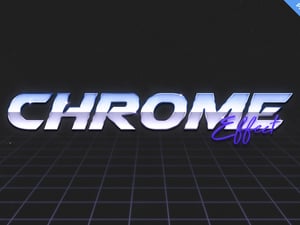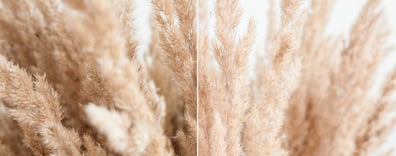
How to Create a Dreamy Photo Effect in Photoshop
In this tutorial, i will show you how to create a dreamy photo effect using various Photoshop tools. We will go over Gradients, Layer Masks, Lens Flares, Curves, Blend Modes and a few more tools to achieve a nice looking dreamy effect in Photoshop that you can apply to any image by following these easy steps.
Tutorial Assets
Step 1
Open the puppy picture in Photoshop.
Step 2
Go to Layer > New Adjustment Layer > Black & White.
Set the layer name to “Black & White” and the opacity to 20% and click OK.
Step 3
Go to Layer > New Adjustment Layer > Curves and set the name of this layer to “Curves”
Step 4
In the Properties window that will pop up, click on the bottom left handler and set the Output value to 10.
Click on the top right handler and set the Input value to 240.
Finally, click in the middle of the curve to place a new handle and set the Input value to 136 and the Output value to 117.
Step 5
Go to Layer > New Adjustment Layer > Hue/Saturation. Set the name of this layer to “Hue/Saturation” and click OK.
Step 6
In the Properties window that will pop up, set the Saturation to 35.
Step 7
Go to Layer > New > Layer. Set the name to “Lens Flare” and click OK.
Step 8
Go to Edit > Fill. Under the “Contents” section choose “Black” from the dropdown menu and click OK.
Step 9
Go to Filters > Render > Lens Flare.
In the Lens Flare window, click inside the thumbnail where the source light is supposed to be in the picture. Set the Brightness to 100% and under Lens Type choose the “50-300mm Zoom”.
Set the Lens flare layer mode to Screen and reduce the opacity to 45%.
Step 10
Go to Layer > New Fill Layer > Gradient. Set the name of this layer to “Gradient”, the Mode to Overlay, the Opacity to 25% and click OK.
Step 11
Set the foreground color to white (#ffffff).
Select the Gradient tool, and in the gradient tool options select the “Foreground to Transparent” fill and the Radial Gradient type. Click and drag starting at the bottom right corner of the image and release at the top left corner.
Step 12
Go to Layer > New Fill Layer > Solid Color. Set the name of this layer to Color Fill 1, the Mode to Screen, the Opacity to 40% and click OK.
Step 13
In the Color Picker window, set the color to #b15ced and click OK.
Step 14
In the tools panel, set the Foreground color to #808080.
Step 15
Click over the Layer Mask thumbnail on the “Color Fill 1” layer.
Step 16
Select the Gradient tool, and in the gradient tool options select the “Foreground to Transparent” fill and the Linear Gradient type.
Click and drag starting at the bottom right corner of the image and release at the top left corner.
Step 17
Go to Layer > Duplicate Layer. Set the name of this layer to “Color Fill 2” and click OK.
Double click on the layer color thumbnail, set the fill color to #fefacb in the Color Picker window and click OK.
Step 18
Set the Layer Blend Mode to “Soft Light” and reduce the opacity to 60%.
Step 19
In the tools panel, set the Foreground color to #8e6f38.
Step 20
Go to Layer > New Fill Layer > Gradient. Set the name of this layer to “Gradient Fill 1”, the blend mode to Soft Light, the opacity to 80% and click OK.
Step 21
In the Gradient Fill window, select the Foreground to Transparent fill, set the Style to Linear, the Angle to 90, the Scale to 150% and click OK.
Step 22
Go to File > Place. Locate the “bokeh-1.jpg” overlay texture and click “Place”. Press the enter key on your keyboard to commit the placement.
Step 23
In the layers panel, set the Layer Blend Mode to “Screen” and reduce the opacity to 25%.
Step 24
Finally, go to Filter > Blur > Gaussian Blur. Set the Radius to 2px and click OK.












































Comments